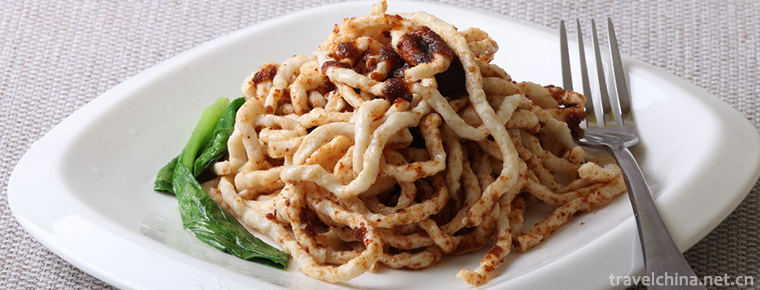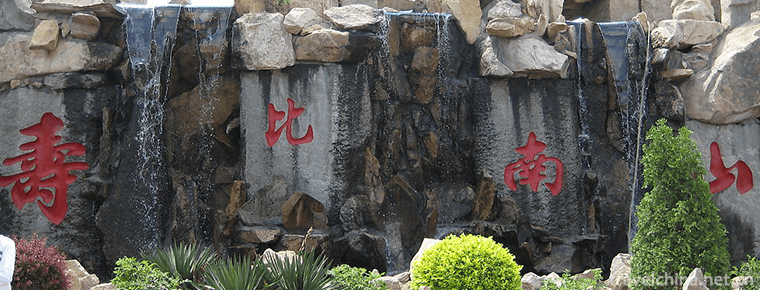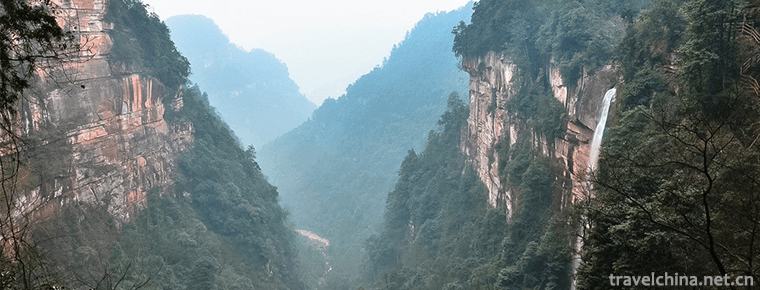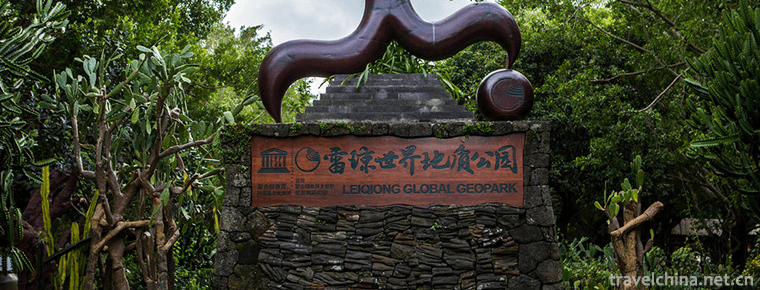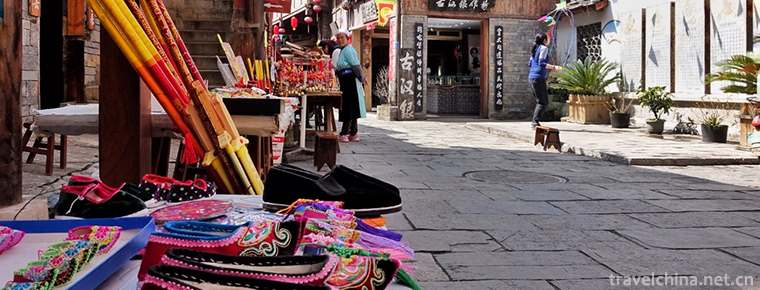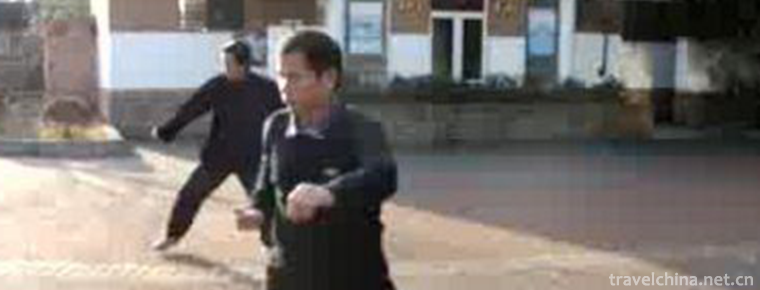Weaving and Dyeing Techniques of Adlais Silk
Weaving and Dyeing Techniques of Adlais Silk
brief introduction
Adlais silk is produced in Jiya Township, Luopu County, located in the northwest of Luopu County, on the East Bank of the middle and lower reaches of the Yulong Kashi River. Ancient Hetian was the transportation hub of the South Silk Road, an important silk distribution center and one of the three major silk capitals in the Western Regions.
History
The silk trade in Hetian flourished in the second and third centuries BC. From the Han Dynasty to the Wei, Jin and Southern and Northern Dynasties, the silk trade became more prosperous, and the Tang Dynasty entered its heyday. It is recorded that during the Northern and Southern Dynasties, a group of transit merchants transported more than 4300 pieces of silk at a time. Large quantities of Chinese silk were mainly transported to Central Asia, the Middle East and the Mediterranean coastal countries via the South Silk Road. "Businessmen and traffickers, the Japanese money is under the plug" and "never stop in time and months". Hetian enjoys a long-standing reputation in the history of silk trade. In the Tang Dynasty, Hetian Real Estate's "silk" was mostly sold to the Central Plains, and was snapped up by the emperor Daqing of the Central Plains dynasty.
The pattern of Adlais silk is said to reflect the religious consciousness of the ancient Uyghurs who worshipped tree gods and water gods in Shamanism. Some people also said that the pattern of Padan wood, comb and the distortion pattern of national musical instruments.
Technological features
texture
Etley silk is soft, light and elegant, especially suitable for summer wear. The fabric is generally only 40 cm wide. Patterns are long strips, some of them are in two-room company, arranged in a coherent manner; some are in tripartite company, staggered arrangement. Etley silk is very gorgeous in color, which is in sharp contrast with the monotonous environmental color on the edge of the desert, highlighting the love and pursuit of the Uygur people for the reality and future life. Etley silk is basically divided into four types: black Etles, red Etles, yellow Etles, and multi-tone Etles. The basic colour of all kinds of silk is one, but it matches other colours appropriately. With convex lines and patterns, it is dignified in its beauty and not stable in its elegance. Black Atlas has the longest manufacturing history and is known as "Andijan Atlas" among the people. This kind of Etlestone is made into clothes for middle-aged and elderly women. Andijan is a city of Uzbekistan. Historically, owing to the close relationship between Hetian and Central Asia, a large number of Uzbeks came to settle in Hetian. Hetian called them Andijans. Up to now, many people in Hotan have prefixed their names with "An Jiang" (Andiyan), indicating that they are of Uzbek descent. Why is Black Etley Silk called Andijan Etles? Some said that this pattern came from Uzbekistan, others said that the Hetian Etley silk had been improved by Uzbek craftsmen, and some said that the Andiyan people in Hetian wore this kind of clothes more. Red Etley silk with red pattern and yellow or white background. Bright color, rich in youth, therefore, deeply loved by girls and young women. The silk pattern of Huang Ai Te Lai is yellow, which is solemn and elegant against various background colors, showing a rich and noble atmosphere. This kind of Etlestone is made into clothes for young and middle-aged women. Another is the mixed type. Uygurs call it Malikiman. They arrange the basic colors regularly, or make a strong contrast, or show a slow change. In addition to these four types, Blue Atlas and Green Atlas have appeared in recent years. Among them, Green Etley Silk is mostly for preschool children's women's wear. These new varieties are not systematic yet. Some of them are classified into the above four types according to their color distribution.
Pattern
pattern
The pattern of Etless silk is rich in variety and has many styles. Flowers, branches and leaves, apricots, apples and pears are used in the pattern of plants. The decorative patterns include wooden combs, tassels, earrings, gems, etc. The wooden hammer, saw and sickle with the tool pattern are used, and the hot wafuqin and the solitaire with the instrument pattern are used. Others are fences, horns, etc. All kinds of patterns have strong local characteristics of Hotan, which is the artistic reflection of the people's living beauty in clothing in Hotan. In the pattern, melons and fruits, branches and leaves are used more, which shows that Hetian is the hometown of melons and fruits. The patterns of Gewafuqin and Duerqin are more common, which show the characteristics of Hotan's hometown of singing and dancing. In addition, Hetian Uygur women's favorite ornaments are also manifested. Some patterns are more intuitive and easy to identify. Some patterns use strong artistic deformation, so it is not easy to identify them. Patterns are usually arranged regularly from top to bottom, such as petals, fences, solitaires, eardrops, and fringes on both sides.
Adelai silk is a unique product with rich national characteristics in Xinjiang. It is the most popular silk material for Uygur women to make dresses. There are two major producing areas: Kashgar and Shache, which are famous for their brilliant colors. The design is exquisite and rigorous, and the color of emerald green, sapphire blue, yellow, green lotus and peach blossom are commonly used. Second, Hetian and Luopu's silks are characterized by black-and-white effect, fictitious and real changes, rough and unrestrained patterns and simple and varied colors.
Characteristic
Silk, silk and satin raw silk as raw material, take its good elasticity, strong pulling force, rich luster, good dyeing performance, woven into silk, light and soft. Its greatest feature is that the printing and dyeing process adopts the ancient warp tie dyeing method, that is, tie dyeing on warp yarn. First, according to the pattern requirements, the warp yarn is laid out, matched and tied, and then layered dyeing, warping and weaving. This kind of dyeing, through the infiltration of dye solution, causes the pattern contour to have the color halo formed naturally. Various colors present errors and disorders, evacuation and not disorderly, which not only enhances the level sense of the pattern, but also forms the characteristics of the pattern with rich changes.
Varieties
According to the traditional names, Xinjiang's Adlais silk can be divided into four categories, namely, Black Atlais, Red Atlais, Yellow Atlais and Shache Atlais.
Adlais silk is a traditional handicraft fabric with Kashgar and Hetian characteristics in Xinjiang. Its tie-dyeing technology is unique, soft, light and elegant, with distinct patterns, symmetrical layout, rigorous combination, brilliant colors and strong national characteristics. It concentrates the characteristics of Xinjiang's singing and dancing and melon and fruit villages which are full of artistic charm on the scale. Among them, they are deeply loved by Uygur and Uzbek women in Xinjiang.
The word "Adlais" is ubiquitous in Indo-European and Turkic vocabulary. It is usually pronounced "Atlas" and changed to "Adlais" in Uygur. It is said that it originated in the late Yuan and early Ming Dynasty. Some craftsmen in Hetian and Kashgar learned to absorb the Central Asian dyeing and weaving method and brought it back to their hometown to start production. From then on, Adlais was introduced to Xinjiang.
The weaving and dyeing process of Adlais silk is extremely complex, the workmanship is fine, and the weaving labor intensity is high. All the processes are completed by craftsmen. This kind of dyeing is made of natural vegetable dyes without any auxiliary textile materials. Therefore, it is harmless to human body and skin, and has a certain health function. Its production process: first, the cocoon is boiled and drawn - and silk - coiled, then tied and dyed - pattern design - bundled, and finally, partitioned - woven - silk, forming the finished product.
Kashgar and Hetian are the main sericulture areas in Xinjiang. Uygurs have a long history of sericulture, silk reeling and weaving. The Adlais silk produced here is mainly rich in local sericulture resources.
Because of its gorgeous color, beautiful appearance, variety of designs and various patterns, Adlais silk is popular among Uygur girls, girls and middle-aged and old women. It is a common and elegant traditional dress in Xinjiang. It is often worn by women in urban and rural areas of Xinjiang. Clothes and skirts. In recent years, some large-scale expositions in Xinjiang often use this kind of silk with strong Xinjiang flavor as decoration or foil, and in some fashion competition performances, designers often use it to design modern clothing with distinctive fashion characteristics. The old Xinjiang Adlais silk has merged into the trend of modern life.

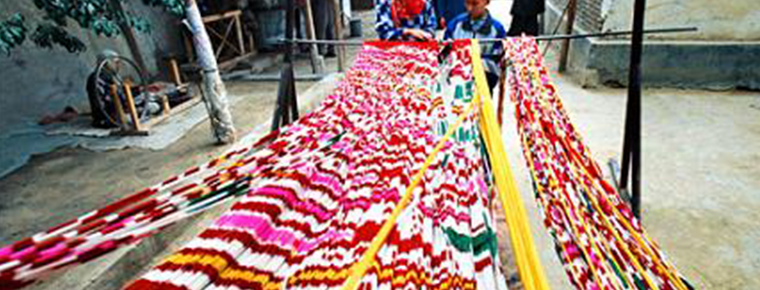
-
sate noodles
The only disciple chef Wang Daquan who teaches Shacha Noodle recipe by the master of Southern Fujian cuisine Yang Jibo inherits the tradition and makes it flourish. The main ingredients of Shacha sauc.
Views: 170 Time 2018-11-02 -
Longkou Nanshan Scenic Area
Nanshan tourist scenic spot is located in the beautiful scenery of Lu Shan in Longkou City, Yantai City, Shandong province. The scenic spots of Nanshan Temple.
Views: 115 Time 2018-12-08 -
SiMian Mountain Scenic Area
The Simian Mountain is located in the remnants of the northern slope of Dalou Mountain in Yunnan-Guizhou Plateau, which is an inverted mountain in geology. Located in the south of Jiangjin District of.
Views: 188 Time 2018-12-12 -
Leiqiong Haikou Volcanic Group World Geopark
Leiqiong Haikou Volcanic Group World Geopark is located in Shishan Town, southwest of Haikou City. It is only 15 kilometers away from the urban area. The Expressway .
Views: 149 Time 2019-01-29 -
Tianlong Tunpu
Tianlong Tunpu Town is located in Pingba District, Anshun City, western Guizhou Province. Deep in the mountains of karst landform, Tiantai Mountain and Longan Mountain are two mountains.
Views: 181 Time 2019-02-21 -
Block door La shou men
Stopper Gate is one of the traditional Chinese boxing schools. It originated in Shaolin and was introduced to Tianjin in the early Qing Dynasty. It originated in Sichuan. It was the earliest southern .
Views: 213 Time 2019-05-10 -
Mongolian camel raising custom
The Mongolian camel-raising custom has a long history. In the practice of production and life with a long history, camel has become the most loyal partner of mankind while making outstanding.
Views: 83 Time 2019-06-04 -
Zhongshan Salt Water Song
Salt water song is a form of expression of Guangdong local folk songs, which is mainly spread among farmers and fishermen in the coastal and river network areas of Zhongshan, Panyu, Zhuhai and South C.
Views: 86 Time 2019-08-03 -
Ding Zhens voice is on the rise and the tiktok of Ganzi Sichuan has doubled
In November 11th CCTV news and Oriental tiktok were put on a short video of the tremble. Ding Zhen, the "sweet boy" in the video, triggered a phenomenal network event with a transmission volume of more than 5 billion times. At the same time, Ding Zhen also became the propaganda Ambassador of his hometown Litang County, driving the search volume of "Litang" to soar by 620%..
Views: 86 Time 2020-12-07 -
Mineral resources in Neijiang
Neijiang City is rich in mineral resources. Energy minerals mainly include coal, natural gas and oil shale; nonmetal and building materials minerals include limestone, sandstone, shale, refractory clay, bauxite, marble, river sand, gravel and ceramic clay, etc.;.
Views: 347 Time 2020-12-16 -
Nanchong science and technology
In 2019, Nanchong implemented 97 key science and technology plan projects, an increase of 7.8% over that in 2018, including 83 national and provincial science and technology plan projects. It won 11 provincial science and technology progress awards. In the whole year.
Views: 144 Time 2020-12-17 -
Guangan secondary industry
In 2019, the industrial added value of Guang'an City will reach 28.87 billion yuan, an increase of 8.8%, and its contribution rate to economic growth will be 34.9%. At the end of the year, there were 597 Industrial Enterprises above Designated Size, and.
Views: 161 Time 2020-12-19
